If you have difficulties viewing this email, please view online |
March 2014 |
|
| |
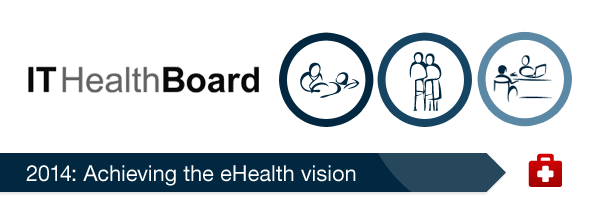 |
|
| |
|

 The year of the portal
The year of the portal
Since 2010, we've been laying the foundations of health IT initiatives that will empower clinicians and consumers to change the way care is delivered. The goal has been to help improve the health of all New Zealanders.
We're making good progress towards delivering on our promises, but now we need to step up the pace.
Specifically, we need to see more general practices offering their patients access to their health information online. The National Health IT Board has set a challenging target for the rollout of patient portals, but they are an essential part of bringing the eHealth vision to fruition.
Portals give patients hands-on access to their own health information to support better management of their health care. Information about their medicines and lab test results will (supported by timely annotations from their clinicians) be at their fingertips, whenever they need it.
I applaud the many general practice teams around New Zealand that have taken up the challenge of introducing a patient portal. They’re already reaping the benefits of an enhanced relationship with their patients and of the administrative efficiencies that will allow them to spend more time on clinical matters.
More importantly, they have empowered their patients to have greater ownership of their health experience.
We’ve asked some of these pioneer GPs to provide clinical leadership and advice to other practices looking to introduce their own patient portals. They’ve agreed, and we are immensely grateful for the time they are giving up to share their expertise and support. This partnership approach is essential to the successful rollout of patient portals in New Zealand.
I’m pleased to introduce our new eHealth Ambassadors: Wellington GP Richard Medlicott, Marlborough/Nelson GP Bev Nicholls, Hamilton GP Damian Tomic, Te Aroha GP Brendan Eade, Auckland GP Karl Cole and Sue Wells, Auckland University and portal researcher.
You will be reading more about each of our Ambassadors in our next newsletter, and they are also happy to engage with you directly. Sue Wells featured in our December newsletter and is interviewed again here, talking about adoption strategies that have proven effective in the United States.
We are working with our Ambassadors and with other important sector groups, such as the Royal New Zealand College of GPs (RNZCGP), our Consumer Panel and the National Information Clinical Leadership Group (NICLG) to encourage greater uptake of portals. This is the next step in moving away from paper-based health information management systems to electronic solutions offering greater benefits for both clinicians and patients.
We are also looking at how we can provide practice advice and support to GPs, and to that end we are supporting the RNZCGP to develop a code of practice around patient portals and a set of principles to guide implementation.
The key will be to engage general practice teams – GPs, practice managers and nurses – in building this important new service for their patients. We know from research that patients are more likely to use a portal if they are given encouragement by the health professional they see the most.
There are many other projects and innovative initiatives also making significant progress this year, such as New Zealand ePrescription Service, electronic medicine reconciliation and the National Maternity System. We will bring you their stories in the newsletters that follow, but there should be no doubt in anyone’s mind that 2014 is indeed the year of the portal.
Graeme Osborne
Director
National Health IT Board
| |
|
|
| |
Clinician’s Corner –
Dr Sadhana Maraj
 |
| Dr Sadhana Maraj |
A major focus for 2014 is the wider rollout of patient portals by general practices around New Zealand. Portals offer significant benefits for both clinicians and patients, and are a key component in improving people’s access to their own health information.
While a number of GP practices around New Zealand are leading the way by offering secure online access to a portal for their patients, we would like to accelerate the pace. One way to do that is by supporting the conversations that need to happen between clinicians, practice managers and nurses about the benefits of portals, as well as offering advice and information as general practices look to implement their own portals.
To that end, we have established a small group of eHealth ambassadors to promote portals to GPs and to the public. These people are leading the way, either by offering their own patients access to a portal or by conducting groundbreaking research into how portals work.
eHealth Ambassador Dr Damian Tomic, for example, emphasises the importance of general practice teams introducing new technology at a pace that suits their practice, while fellow eHealth Ambassador Dr Brendon Eade says his practice has already seen improvements in patient interaction after introducing a patient portal about a year ago. Patients can explore the portal at their own pace, and often gradually familiarise themselves with the service before using it to send a message to their GP.
The successful introduction of patient portals will depend on good communication with clinicians and patients, the right policies and processes, and articulating a clear vision of improved patient care for all New Zealanders.
We are also working closely with key sector organisations such as the RNZCGP, which provides professional development for GPs and sets standards for general practice. The IT Board will support the College as it develops a code of practice for GP practices using portals.
In addition to building relationships, we are actively promoting the benefits of portals to the public through media articles, newsletters and websites. Experience shows that patients greatly value the opportunity to take more control of their own health management, along with the added convenience of accessing information when they need to.
Other important areas of work for 2014 include the progress being made on telehealth, co-design and collaboration, and the implementation of the maternity information systems project.
The IT Board supports a partnership approach to the design and thinking around eHealth initiatives, especially where this will support clinicians and consumers to work together to drive transformational change.
The increasing use of telehealth initiatives is also improving the way care is delivered by clinicians around the country. The Telehealth Forum is carrying out a stocktake of telehealth activities to give us a good picture of the work being done and of key clinical leads.
This will be very useful information. If you have received a letter asking you to answer a few questions on telehealth, please do complete and return the survey.
Finally, I would also like to draw your attention to the progress made on a new online system to house New Zealanders’ maternity health records and allow consumers to access their records online. The move to online records is part of the Maternity Information System Programme (MISP), which will replace a number of different systems operated by individual DHBs.
Stage one of the programme being rolled out this year involves establishing the online system in DHBs and creating a 'maternity view' interface for women to view their information online.
An article in the Manawatu Standard provides a good description of the programme: Click Here to view
There is a lot happening in the world of health IT and we are looking forward to continuing to work closely with clinicians and other stakeholders this year as we strive to make significant progress on a number of initiatives.
Sadhana Maraj
eHealth Clinical Lead
Manager, Health IT Programmes and Innovation
|
|
| |
|
|
| |
|
|
| |
|
|
| |
US experience of portal adoption strategies
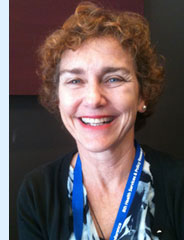 |
| Dr Sue Wells |
In our December 2013 newsletter, Harkness Fellow Dr Sue Wells talked about her research into the benefits of online portals to patients and health providers in the United States.
In this article she describes some of the strategies used by health organisations in the US to encourage health professionals, clinical staff and patients to start using secure online patient portals.
Dr Wells, a former GP now with the School of Population Health, Auckland University, studied the use of electronic health records to improve health care delivery for chronically ill patients while on a Harkness Fellowship to Harvard Medical School and the Brigham and Women’s Hospital in 2012.
“Research shows that patients are much more likely to register to use a portal if the health professionals they see most often encourage them to do so,” she says.
“While that is usually their GP, it also includes a wide range of other people working in health settings such as nurses, pharmacists and reception staff. All of these people can directly affect portal adoption.”
The priority, therefore, was to get health clinical staff on board with the benefits of portals and how they worked. US health providers, which were often very large organisations with millions of patients on their books, used a number of methods to help people accept the new technology.
“Creating the right culture, articulating a clear vision of improving patient care, carefully putting in place policies and processes, communicating well with clinic staff and the wider community, training staff and providing adequate support – these are all essential to the successful rollout of patient portals,” says Dr Wells.
She says many health providers started small and then expanded the services available to patients as acceptance and use of the portal grew. For example, some started by giving patients the ability to see a list of medications they were taking and the ability to request a prescription refill. When it was clear this was useful and working well, they added more functions so that patients could then book health appointments, view their lab test results and see what immunisations they had received or were due for.
Many clinical staff were on salaries so the organisations they worked for developed performance-related incentives, as well as providing small but valued rewards to clinicians seen as high performers.
Strategies to encourage patients to sign up for a portal focused on increasing awareness of what portals could do, and actively promoting them to patients within the clinics and to the wider public.
“Paid advertising, articles, newsletters, websites, social media and events were all used as ways to inform and interest patients in portals,” says Dr Wells. “It was about putting portals firmly on their radar.
“US solutions for encouraging adoption of portals are not necessarily solutions that work for New Zealand. Our task will be to decide what will work best given our own unique context and health services.”
Main points
| • |
Health professionals need to be on board |
| • |
Must be clear about the benefits of portals |
| • |
Have the right policies, processes, training and supports in place |
| • |
Communicate effectively with patients and clinicians |
| • |
Monitor use and adapt portal as needed. |
|
|
| |
|
|
| |
| |
|
|
| |
In this issue...
College support for portal rollout
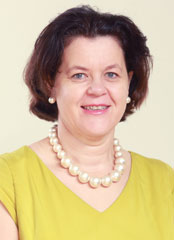
Helen Morgan-Banda, CEO of the Royal New Zealand College of General Practitioners, says:
The College is supportive of all methods of bringing primary health care to New Zealanders, including via the use of patient portals and electronic communications. However, we recognise there are a number of important issues around the portals that need careful consideration, such as permissions, confidentiality of information and access, security and the sharing of information with other health professionals, and the use of electronic communications for contacting patients urgently.
The College has already spoken to the National Health IT Board about being actively involved in helping the College develop the processes and a Code of Practice around patient portals, so that members and the New Zealand public can feel comfortable and confident with this new way of accessing health services.
General practice innovators to lead the way
The National Health IT Board is delighted to be working with a group of top general practice innovators to lead the way in a national rollout of online patient portals to improve health care.
An IT Board survey indicates that 15 to 20 percent of general practices have or are in the process of implementing patient portals. The aim is for half of all general practices to be offering a patient portal by the end of 2014.
The eHealth Ambassadors are:
Dr Richard Medlicott,
a Wellington GP;
Dr Bev Nicolls,
a Nelson/Marlborough GP;
Dr Damian Tomic, a Hamilton GP;
Dr Brendon Eade, a Te Aroha GP;
Dr Karl Cole, an Auckland GP;
Dr Andrew Miller; a Whangarei GP;
and Dr Sue Wells,
University of Auckland.
All the eHealth Ambassadors use a portal in the own practices, are in the process of introducing one or are actively involved in research on portal adoption and benefits. They will talk to GPs, practice managers and nurses about the benefits of setting up portals, and will provide guidance and support to practices establishing their own portals.
Health Minister Tony Ryall introduced the group of eHealth Ambassadors at an event at Parliament on 18 February 2014: Click Here to view
Portals give patients more access to their own health information and the ability to manage more aspects of their own care. Patients can log in securely to look at their latest laboratory test results, book appointments, order a repeat prescription, or to send a message directly to their GP.
Dr Tomic says some clinicians worry about losing face-to-face contact with patients, but that hasn’t been an issue in his practice.
"We still ask patients to come in if we have any concerns, just as we would if a patient called our practice. Patients who use the portal seem to be more engaged in their healthcare, which may lead to better outcomes,” says Dr Tomic.
"It's important to introduce any new technology at a pace that suits your practice. When first using a portal, for example, perhaps just test it with a few patients. Get a sense of what works for you, your staff and your patients.
"The cost associated with patient portals can be prohibitive for small practices. Patient portals have such a system-wide benefit that it's important we look at the expenditure issue at a national level and consider options such as funding models, national contracts, or incentives that make it easier for general practices to transition to this new way of working."
Dr Eade says the practice introduced a patient portal about a year ago as part of an overall strategy to improve care delivery.
"We've already seen improvements in our day-to-day interactions with patients. We've been able to reduce some of our transactional interactions, such as setting up appointments, which has freed up staff to focus on other aspects of patient care,” he says.
"Everyone in the practice attended a series of workshops to discuss the technical aspects of the changeover as well as concerns over issues such as privacy. We also held a community forum to give patients the opportunity to learn about the portal and to ask questions about it."
In addition to the appointment of the eHealth Ambassadors, principles are being developed to ensure vendors provide a secure and consistent service to general practices that are introducing patient portals.
The portals should keep personal health information confidential, and should be accessible and easy to use. They should also support popular web browsers, as some patients have said they would like to be able to use their patient portal on computers in public libraries and in other venues as well as on their home computers.
Based on consumer expectations and information governance advice, the principles aim to ensure vendors give general practices clear advice to help them set up portals that patients are easily able to log into and use.

|
|
| |
|
|
|
Electronic medicine reconciliation is improving care
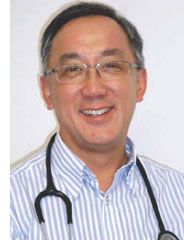
|
Pakuranga GP Dr Denis Lee
and RMO Dr Jing Dong
gave feedback on eMR.
|
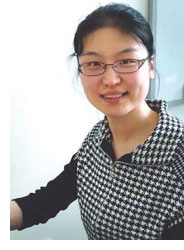
|
Electronic medicine reconciliation (eMR) is improving patient safety at Counties Manukau District Health Board.
The DHB started using eMR for 148 patient beds in November 2012 and, a year later, is using it for 648 beds in 25 wards.
Marie Lewis, a Quality Improvement Pharmacist (Medication Safety) at Middlemore Hospital, says the number of discrepancies recorded in patients’ medicines has fallen significantly following the eMR rollout, and it has been a very successful initiative.
“Some of the discrepancies we’re talking about are significant and could potentially lead to harm for the patient, so the idea is to prevent discrepancies from reaching the patient and this where eMR really helps.”
In one example, a patient admitted had five of her husband’s medicines mistakenly charted for her, as she had brought them in with her. The Clinical Pharmacist picked up the error during the eMR process and ensured the medicines were no longer charted for the patient.
Medicine reconciliation involves obtaining the most accurate list of medicines, allergies and adverse drug reactions, comparing this with what has been charted, and reconciling any discrepancies.
A patient’s medicines may be changed when their care is handed over to other health professionals, for example, during admission to, transfer or discharge from hospital. Some of these changes are intentional but have not been clearly documented. The unintentional changes result in medication errors, a third of which can cause patient harm.
Marie Lewis says eMR was phased in over time at Counties Manukau and involved a significant culture change, extensive training, communication and collaboration with clinical staff. The DHB established a website with all of its training guides, and is sharing the website with Northland and Waitemata DHBs.
“Working together with our pharmacists and doctors has been a really crucial part of this project,” she says.
“We understood right from the start that we needed to be clear how the various groups of clinicians and patients would benefit from eMR. For example, when our doctors saw that eMR would automatically fill in the patient electronic discharge summaries with the medicines the patient had been taking at home and the changes made in hospital, they saw immediately that this would support their clinical decision-making on discharge.”
She says GPs prefer the colour-coded medication table in the Electronic eDischarge Summaries, which helps them see clearly what medicine changes have been made in hospital.
Patients, meanwhile, are able to see which medicines were started, changed or discontinued while they were in hospital and why through the Patient Medication Card, which is generated by the Clinical Pharmacist through the eMR process. For patients frequently admitted to hospital, eMR reduces the time required to generate an accurate medication history.
Marie Lewis says the next step will be to complete the evaluation of the impact of eMR on patient outcomes at the DHB.
|
| |
| |
Back to Top |
|
|
|
|
| |
|
 |
|
